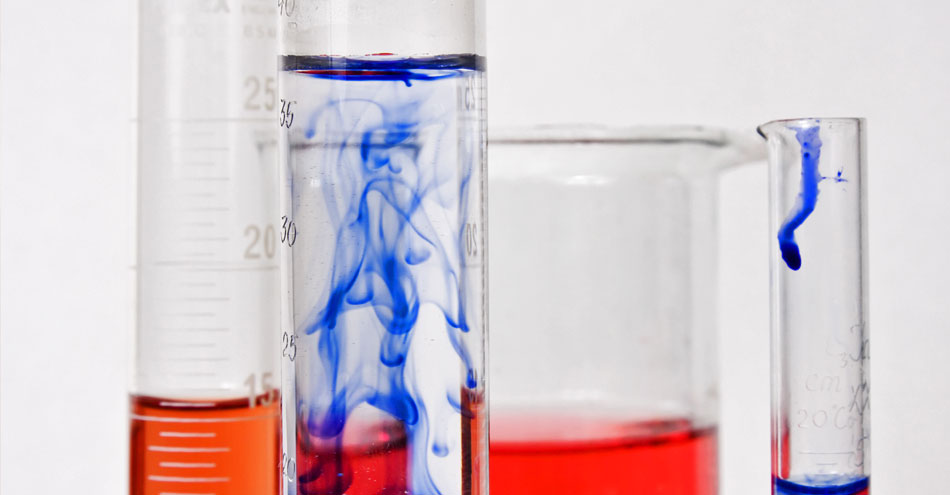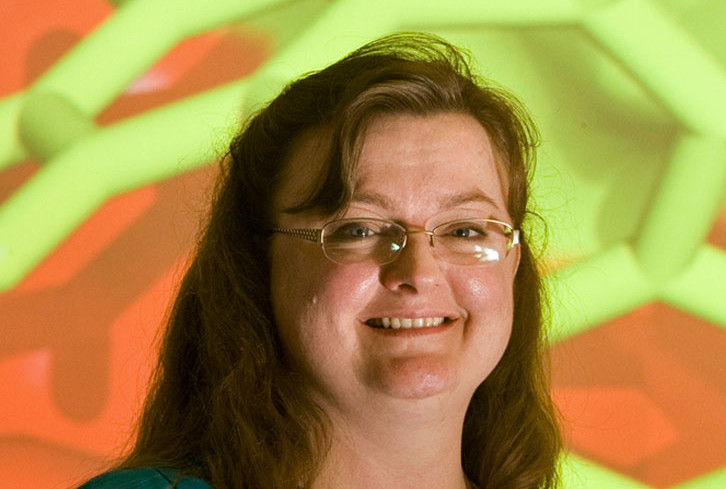
When Jacqueline Bennett started the research that led to the first U.S. patent ever earned from work done solely at SUNY Oneonta, she wasn’t thinking about commercial opportunities. She was just trying to keep her own family healthy. Naturally, that means developing a new chemical process that’s safer, greener and more efficient than traditional methods used to make imines, a class of chemical compounds that has household and industrial applications.
Bennett, associate professor of chemistry and biochemistry at the college, received the patent for “Green Synthesis of Aryl Aldimines Using Ethyl Lactate” in July, 2014. The patent covers a process for making imines, a class of chemical compounds used in various industries, including pharmaceuticals. Bennett’s process is greener, safer, faster and less expensive than traditional methods for making imines.
The experiments that led to the new process started in 2002, when Bennett was teaching at Drury University in Springfield, MO. She and her husband had recently decided they wanted to have children. But Bennett’s upcoming responsibilities included teaching two four-hour organic chemistry labs, and many of those labs involved the toxic compound methylene chloride, which can cross the placenta.
“I didn’t want to be breathing that solvent for eight hours a week while I was pregnant,” Bennett says.

Thus started a quest for green organic experiments with real-world applications that would yield high-quality crystals—preferably in attractive colors, to make the labs interesting for her students. Bennett also wanted reactions that did not require hours of boiling, since a four-hour lab can’t accommodate such steps.
Her experiments in green chemistry continued when Bennett joined the SUNY Oneonta faculty in 2006. Eventually, she thought to try an electronics solvent called ethyl lactate.
She ordered a supply and, when it arrived, mixed it in a flask with her starting materials. Then she settled in to write some notes. Glancing up from her lab notebook a couple of minutes later, Bennett got a surprise. “There was gold glitter coming out of the solution already!”
Repeated experiments with different starting materials continued to produce excellent yields of high-quality crystals, all of them imines, at room temperature in just minutes, sometimes even seconds.
Bennett’s team of undergraduate researchers played a crucial role in testing the new process. “We made more than 200 imines,” she says of the group, called the BLONDES (Building a Legacy of Outstanding New Developments and Excellence in Science). “I couldn’t have possibly done that alone.”
As Bennett continued reading about processes for synthesizing imines, she realized that she was onto something new. Nearly all of the existing methods required hours of boiling, a much larger investment in chemicals, or both. So she started investigating how to patent her new process.
Because no one at SUNY Oneonta had filed for a patent recently, sponsored programs administrators at the campus referred Bennett to the Research Foundation for SUNY central office in Albany. The RF collected the necessary information from Bennett and facilitated the work required to apply for a patent.
With that protection now established, the RF will seek opportunities to commercialize Bennett’s process. “My understanding is that they will contact different markets to try to license the technology,” Bennett says.
Two pharmaceutical products, the cholesterol-lowering drug Zetia® and the chemotherapy drug Taxol®, are made from imines that Bennett has synthesized in her lab. The lab has also used the new process to synthesize imines that help stop corrosion in metals, destroy bacteria and treat tuberculosis.
Bennett and her husband now have two boys, born in 2003 and 2005. Thanks to the work that Bennett took on to protect those children, the world could soon gain a safer, less energy-intensive and more cost-effective way to make products that help keep other people healthy as well.



